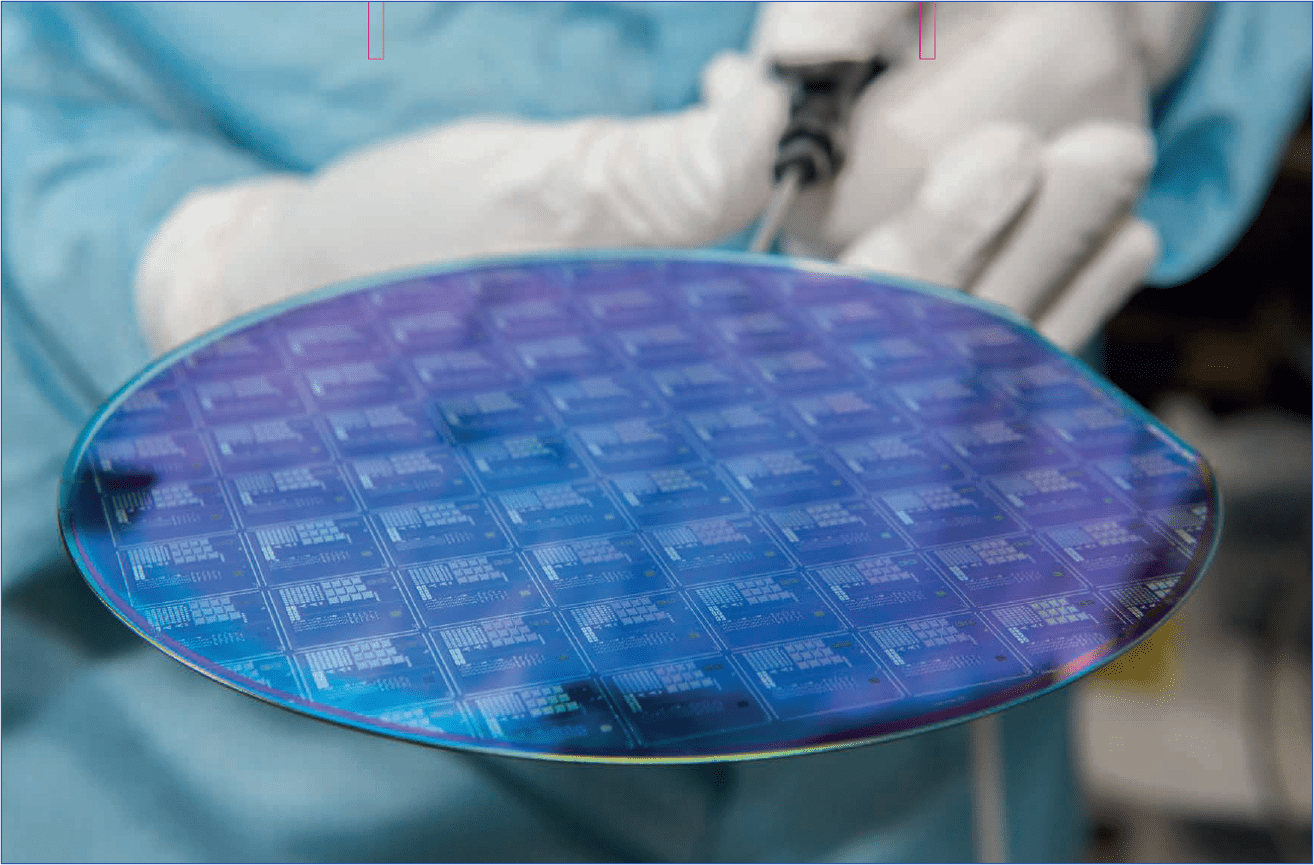
Rising to the challenge of the global shortage of semiconductors
Developing Silicon Photonics
Currently the biggest market for semiconductors is silicon electronics, however, there is increasing demand in certain application areas for Silicon Photonics that enables the high volume, low-cost and high-performance production of photonic devices and circuits which utilise and manipulate the properties of light rather than electrons.
Silicon Photonics at near-infrared wavelengths has already revolutionised data communications, and numerous other applications are emerging. However, some of the emerging applications require longer wavelengths and different waveguiding platforms.
Semiconductor technology for these longer wavelengths is being developed within the Hub and could have significant global impact in areas such as environmental sensing, early diagnosis of cancer and therapeutic drug monitoring.
Hub academics are exploring semiconductor technology to extend research into mid-infrared wavelengths – known as the fingerprint region – that could be used to create sensors at the chip scale.
“Our Hub colleagues in Sheffield are also exploring the integration of lasers onto these new platforms where appropriate, so that the chips will have the full on-chip sensing capabilities.”
The synergy between the Hub and CORNERSTONE means that this technology can then potentially be made available to CORNERSTONE users in both academia and industry.
CORNERSTONE Coordinator Dr Callum Littlejohns said: “As we have done with previous research from the Hub and elsewhere, we take these latest technologies and offer them licence free and open source for the benefit of our clients. This flexibility enables them to try out new devices and novel ideas, or to develop new prototypes.”
Global impact
The Hub’s semiconductor Silicon Photonics research and development is already feeding into a multimillion-pound research programme – Mid-Infrared Silicon Photonic Sensors for Healthcare and Environmental Monitoring (MISSION) – that is spearheading the creation of new sensors that monitor drugs, speed up cancer detection and measure the impact of climate change.
- Environmental monitoring of gases
- Therapeutic drug monitoring by healthcare professionals
- Early stage cancer detection
Environmental monitoring of gases
– focusing explicitly on oceans and how sensors on a chip can be used to identify problematic gases in the oceans. Currently these gases are typically monitored by deploying ships with numerous large sensors, but sensors on a chip could be put on robots, drones or even dropped directly into the sea. This could enable more, and previously inaccessible places, to be monitored.
Therapeutic drug monitoring for healthcare professionals
– currently blood samples have to be sent away to a laboratory to measure drug concentrations. Sensors on a chip could enable point-of-care diagnostics allowing doctors to administer more accurate doses of drugs and optimise the effectiveness of drugs in real time.
Early stage cancer detection
– current test equipment is typically very large and/or expensive, meaning patients have to be tested in hospital and the number of people that can be evaluated each day is limited. This also requires a wait for results. Using a spectrometer on a chip would enable more people to be diagnosed more quickly and therefore earlier. The lower-cost, smaller equipment could potentially be available in every doctor’s surgery, every hospital ward and perhaps even in people’s homes.
The future
The processes being developed at Southampton have the potential to be used in a range of different applications. Spectrometers can be used to measure numerous species from gases to explosives, so in principle it is very widely applicable.
Through CORNERSTONE, it is not only academics at Southampton who can benefit from the technologies that are developed; they are available to anybody via the open source platform.